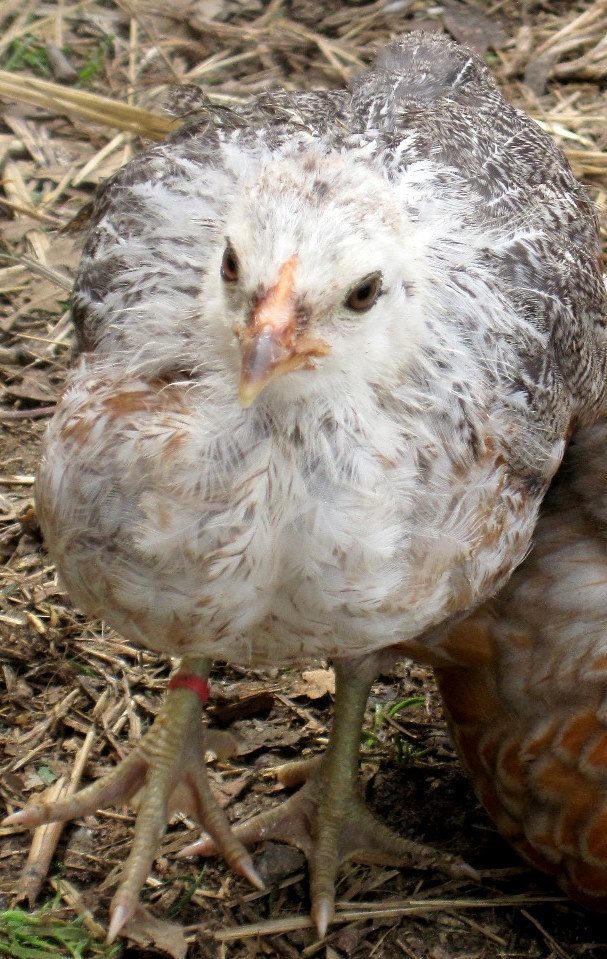Silver duckwing pullets, not gold. Splash cockerel, not white. Leaky blue cockerel, will grow to have "golden" leakage of white and yellow possibly red.I really could use some help sexing my pullets and cockerels. I have put my guess below. Can you let me know your thoughts.
1. My thought is gold duckwing pullet no tufts


2. Mostly white double tufted Cockerel?


3. Gold duckwing pullet no tufts again


4. Blue double tufted cockerel


5. Clean faced Cuckoo Cockerel? I thought it was a hen but three rows? But then again I do not see saddle feathers


6. Double tufted black pullet. This one seems the easiest to me


Otherwise, yep.

On clean faced producing tufts - I heard of internal tufts on and off from people, I believe Lanae is one of them, I just never saw it happen til now. It's neat, really, but at times is hard to explain to someone who doesn't understand genetics in the first place, because it without explaining the internal part, defies the definition of a dominant gene. So then ya gotta explain the internal part, then it just sounds like you don't know what you're talking about. Or maybe I just spend too much time lately with people who don't understand genetics.

















